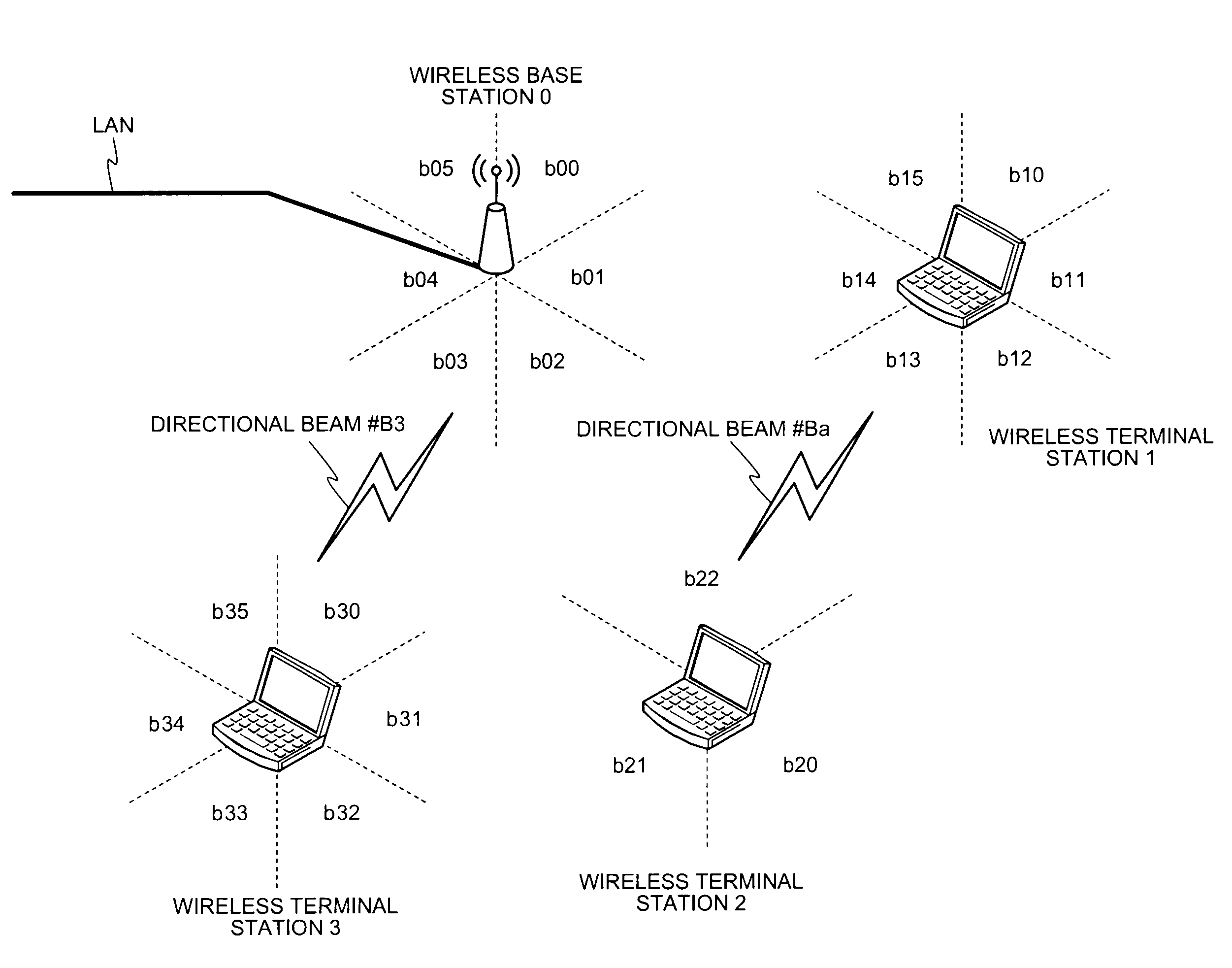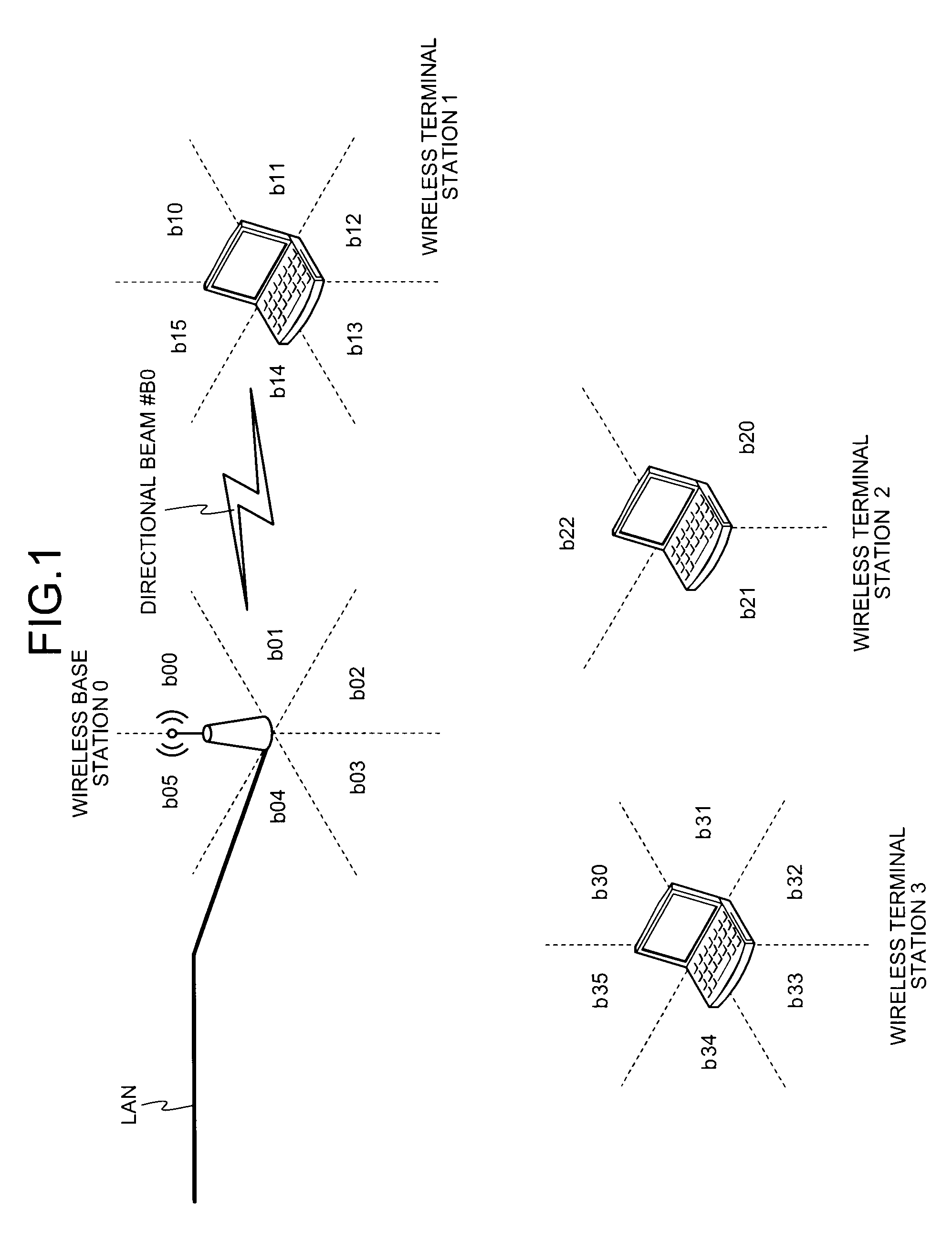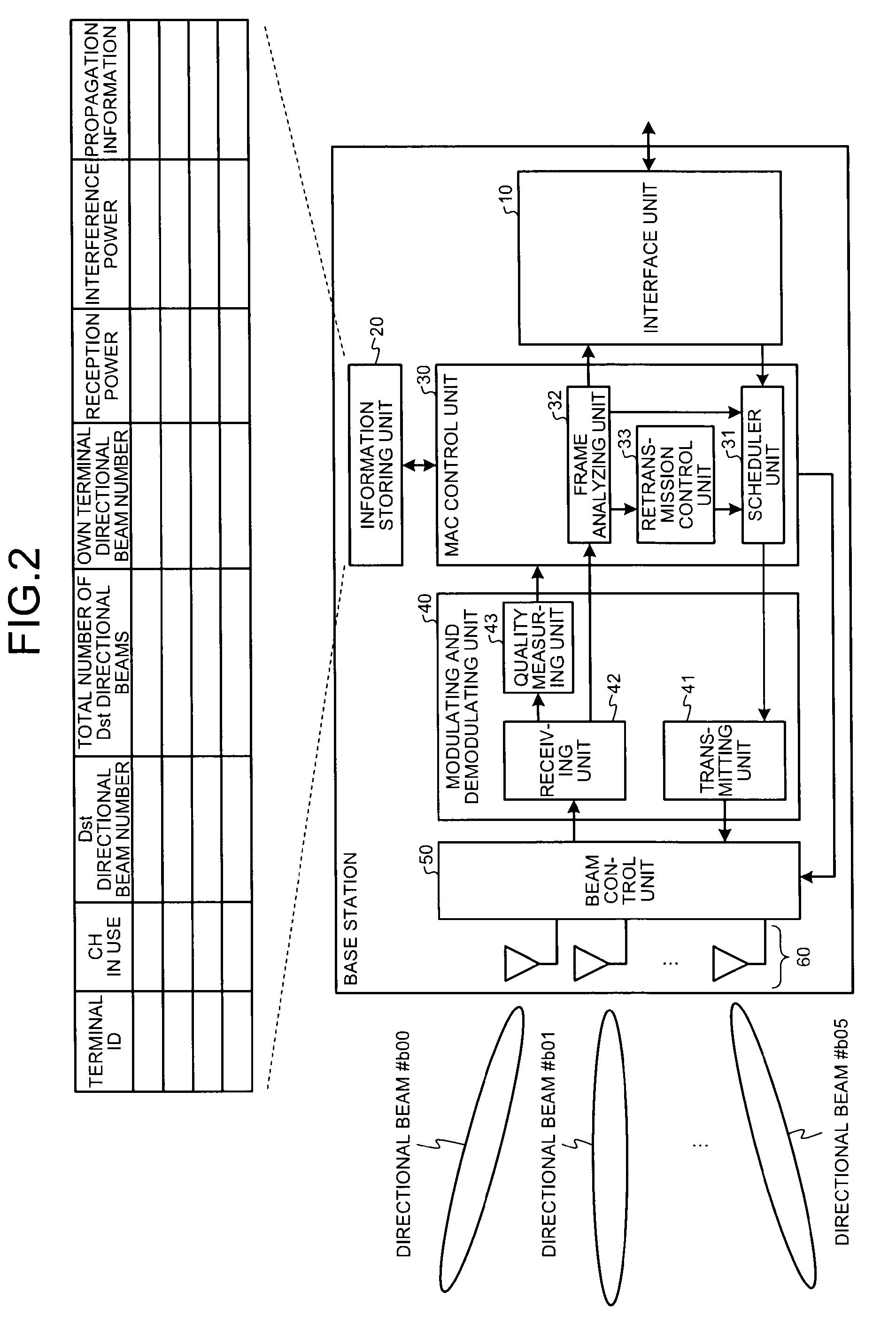Wireless communication system, wireless terminal station, wireless base station, and wireless communication method
a wireless communication and wireless terminal technology, applied in the field of wireless communication systems, can solve the problems of limited communication areas, limited use and application environments, and need for adjustment of directivity, and achieve the effect of efficient use of a band
- Summary
- Abstract
- Description
- Claims
- Application Information
AI Technical Summary
Benefits of technology
Problems solved by technology
Method used
Image
Examples
first embodiment
[0099]FIG. 1 is a diagram of a configuration example of a first embodiment of a wireless communication system according to the present invention. This wireless communication system includes a wireless base station (which may also be referred to as PNC or AP) 0 connected to, for example, a LAN as a wired network and a plurality of wireless terminal stations (which may also be referred to as DEV or STA) 1, 2, and 3 set in a service area of the wireless base station 0. In FIG. 1, areas divided by dotted lines arranged around the wireless base station 0 indicate directions of directional beams set for convenience in this embodiment. This indicates that, when the wireless base station 0 transmits data or the like in the respective directions, the wireless base station 0 can transmit the data or the like using directional beams formed in desired directions by setting directional beams of beam numbers (b00, b01, . . . , and b05) shown in the areas. The same applies to dotted lines arranged...
second embodiment
[0174]A second embodiment is explained. In this embodiment, operation for efficiently transmitting a DD frame compared with the first embodiment and performing device discovery is explained. A precondition (a configuration of a wireless communication system) and a basic sequence are the same as those shown in FIGS. 14 and 15 explained in the first embodiment. Therefore, only differences are explained in this embodiment.
[0175]First, operation until the wireless base station 0 performs “Device Discovery start notification” to the wireless terminal station 1 shown in FIG. 15 is the same as that in the first embodiment. Operation from the “Device Discovery start notification” is explained.
[0176]The wireless base station 0 transmits “Device Discovery start notification” including start and end times (a DD period) of device discovery, directional beam switching timing, and an access method to the wireless terminal station 1 and the wireless terminal station 2 using announcement informatio...
third embodiment
[0182]Subsequently, a third embodiment is explained. In this embodiment, a highly-efficient discovery procedure is explained. A configuration of a wireless communication system is the same as that in the first embodiment (see FIG. 14) explained above.
[0183]FIG. 22 is a diagram of an example of a device discovery procedure in the third embodiment. A procedure until “Device Discovery start notification” is the same as that in the first embodiment. Therefore, explanation of this part of the procedure is omitted.
[0184]The wireless base station 0 transmits “Device Discovery start notification” including start and end times of device discovery (DD period), directional beam switching timing, an access method, and the like to the wireless terminal stations 1 and 2 using announcement information frame or an individual frame (Step S31). The other wireless terminal station 3 that receives this frame recognizes that the DD period has started and does not perform communication for a fixed time.
[...
PUM
 Login to View More
Login to View More Abstract
Description
Claims
Application Information
 Login to View More
Login to View More - R&D Engineer
- R&D Manager
- IP Professional
- Industry Leading Data Capabilities
- Powerful AI technology
- Patent DNA Extraction
Browse by: Latest US Patents, China's latest patents, Technical Efficacy Thesaurus, Application Domain, Technology Topic, Popular Technical Reports.
© 2024 PatSnap. All rights reserved.Legal|Privacy policy|Modern Slavery Act Transparency Statement|Sitemap|About US| Contact US: help@patsnap.com










